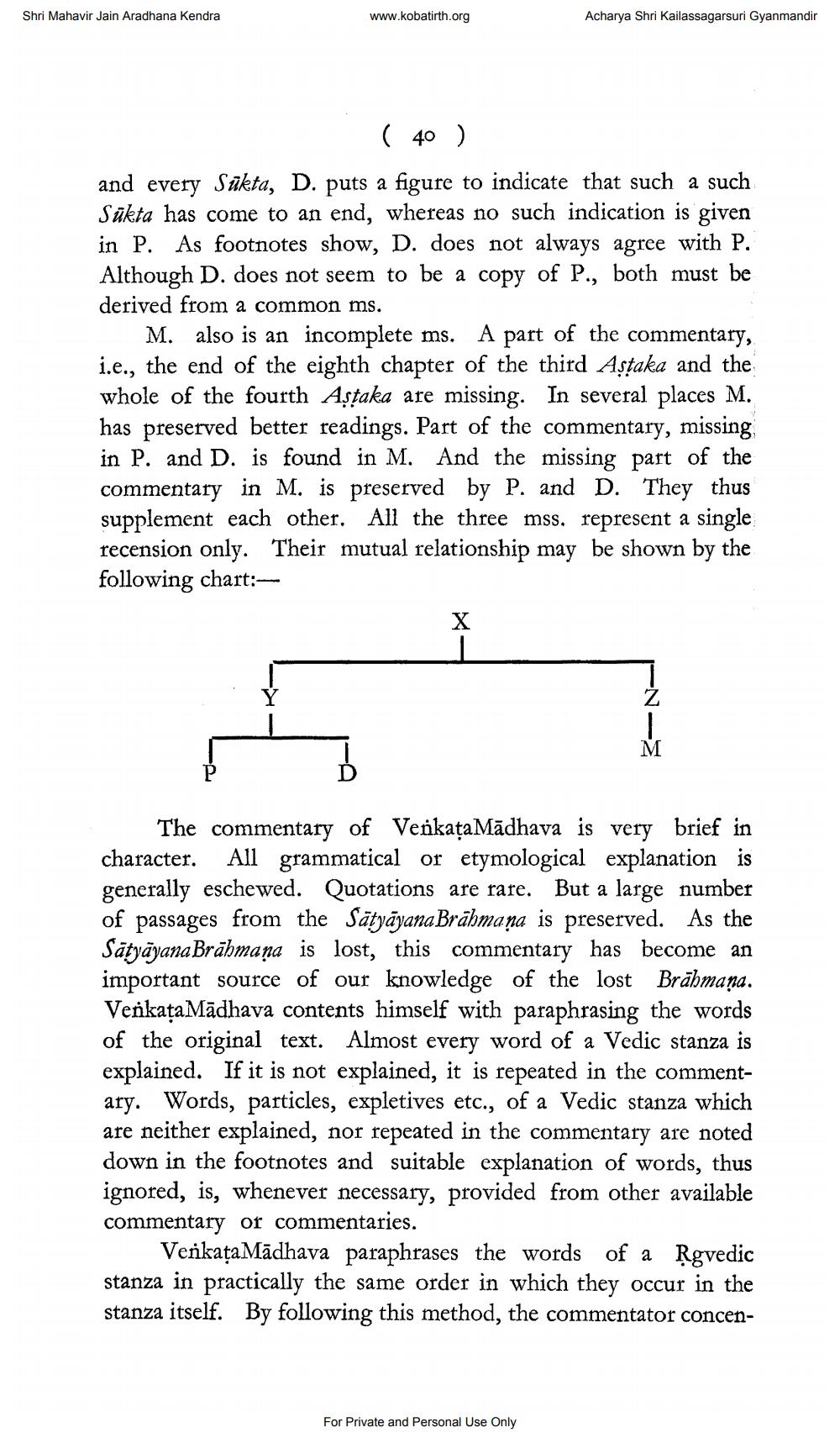________________
Shri Mahavir Jain Aradhana Kendra
www.kobatirth.org
Acharya Shri Kailassagarsuri Gyanmandir
( 40 )
and every Sukta, D. puts a figure to indicate that such a such Sükta has come to an end, whereas no such indication is given in P. As footnotes show, D. does not always agree with P. Although D. does not seem to be a copy of P., both must be derived from a common ms.
M. also is an incomplete ms. A part of the commentary, i.e., the end of the eighth chapter of the third Astaka and the whole of the fourth Așțaka are missing. In several places M. has preserved better readings. Part of the commentary, missing in P. and D. is found in M. And the missing part of the commentary in M. is preserved by P. and D. They thus supplement each other. All the three mss. represent a single recension only. Their mutual relationship may be shown by the following chart:
12-M
The commentary of Venkata Mādhava is very brief in character. All grammatical or etymological explanation is generally eschewed. Quotations are rare. But a large number of passages from the Sätyāyana Brāhmana is preserved. As the Sātyāyana Brāhmana is lost, this commentary has become an important source of our knowledge of the lost Brāhmana. Verkața Mādhava contents himself with paraphrasing the words of the original text. Almost every word of a Vedic stanza is explained. If it is not explained, it is repeated in the commentary. Words, particles, expletives etc., of a Vedic stanza which are neither explained, nor repeated in the commentary are noted down in the footnotes and suitable explanation of words, thus ignored, is, whenever necessary, provided from other available commentary or commentaries.
Venkața Mādhava paraphrases the words of a Rgvedic stanza in practically the same order in which they occur in the stanza itself. By following this method, the commentator concen
For Private and Personal Use Only




